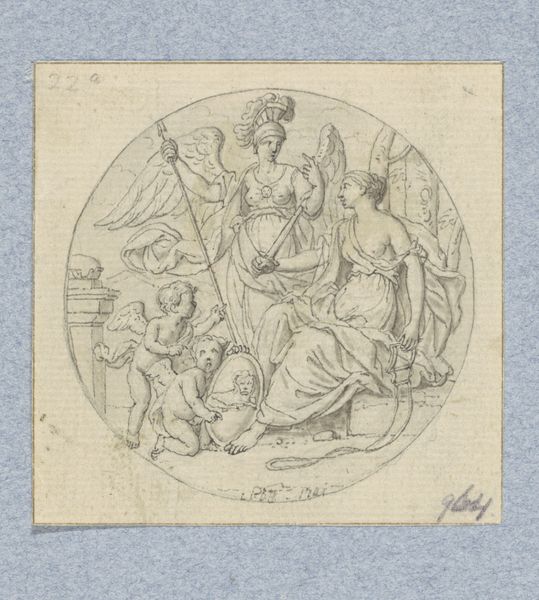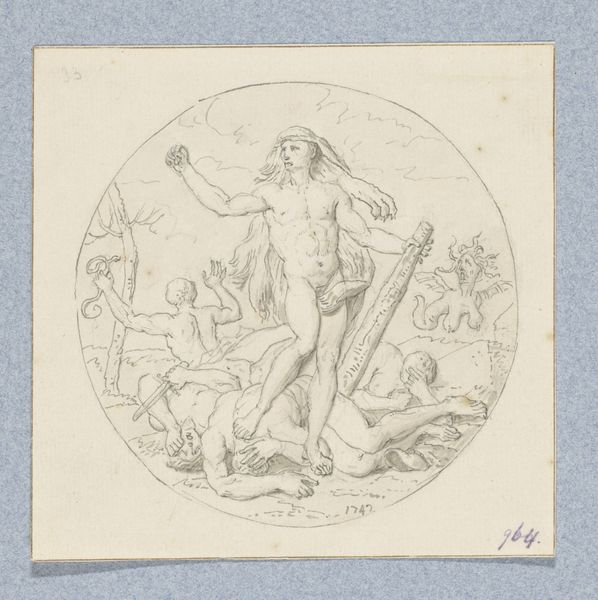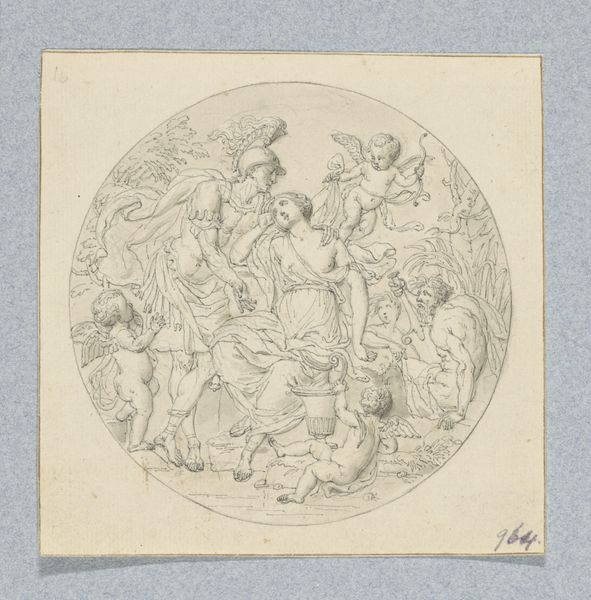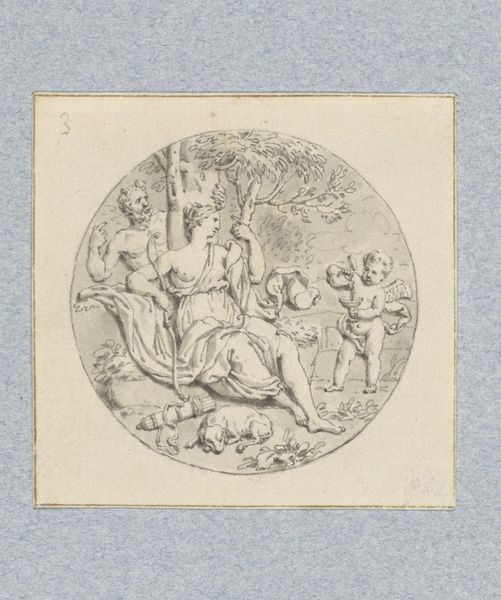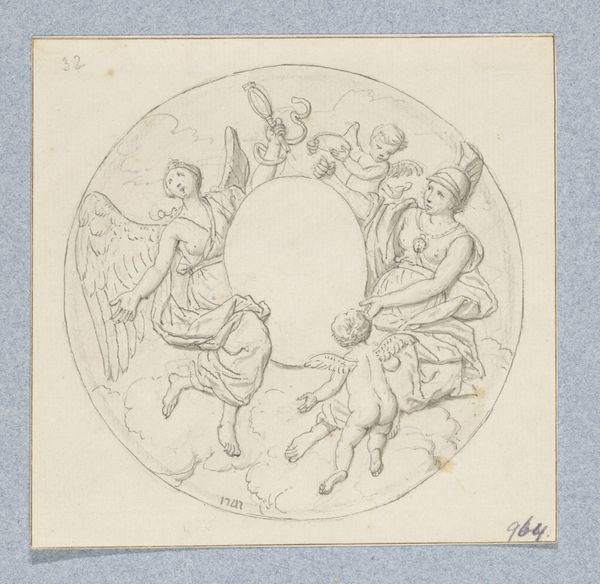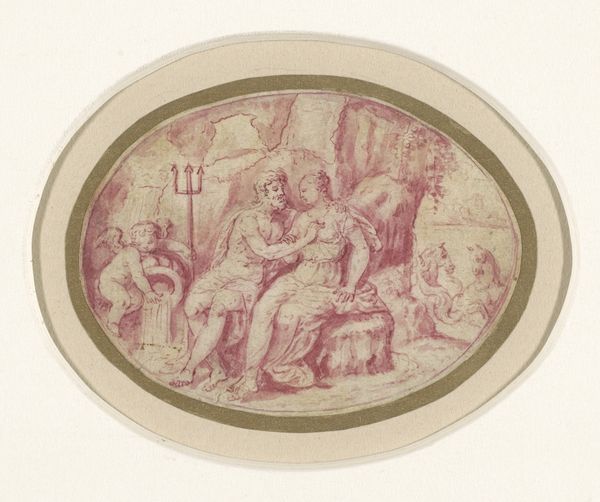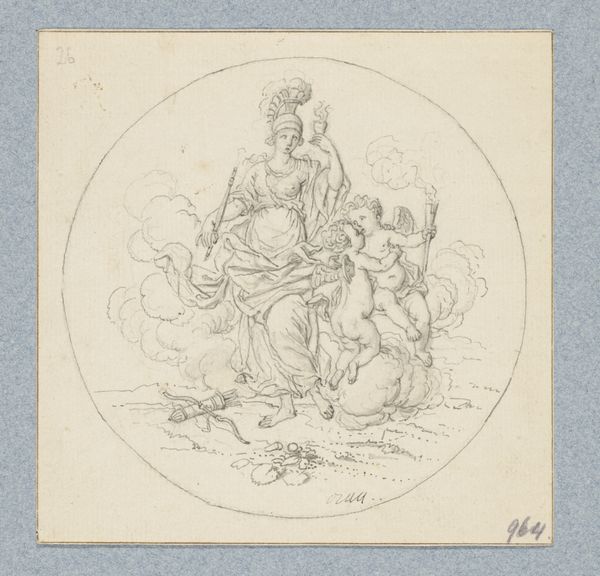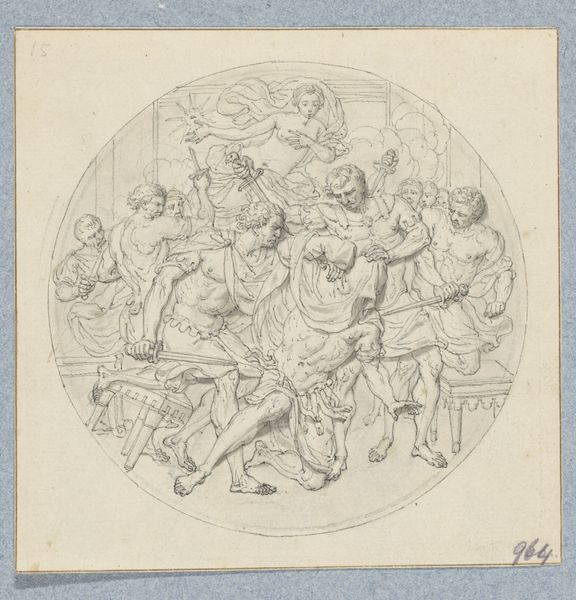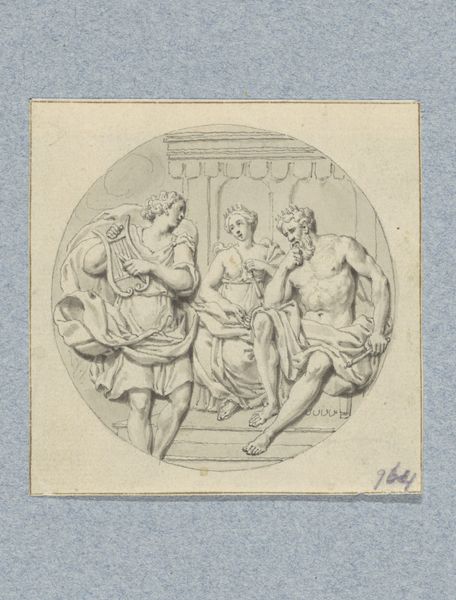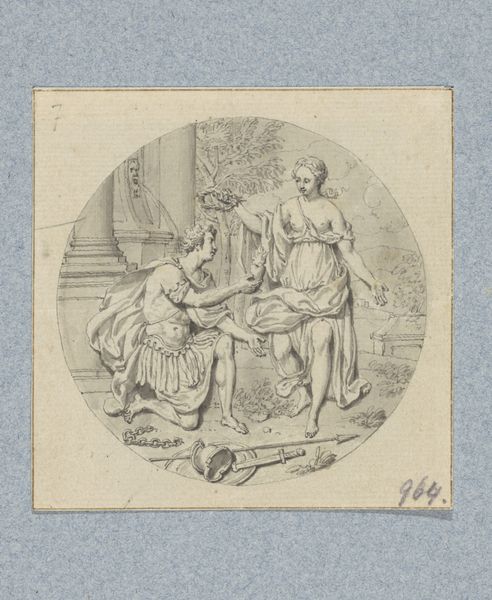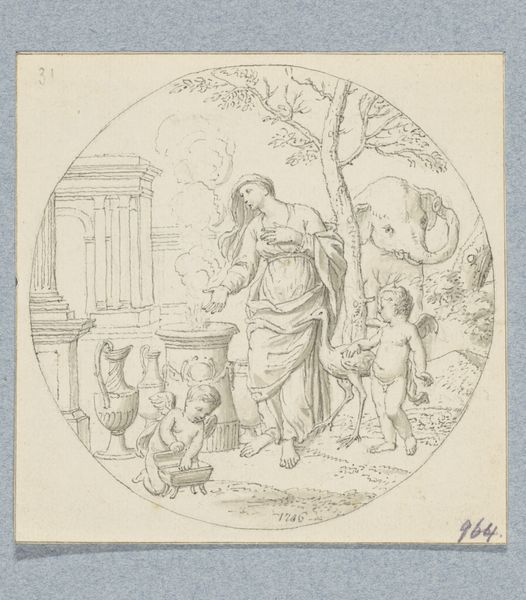
drawing, paper, pencil
#
drawing
#
aged paper
#
paper non-digital material
#
allegory
#
sketch book
#
personal journal design
#
figuration
#
paper
#
personal sketchbook
#
journal
#
coloured pencil
#
pencil
#
sketchbook drawing
#
storyboard and sketchbook work
#
sketchbook art
#
rococo
Dimensions: height 76 mm, width 77 mm
Copyright: Rijks Museum: Open Domain
Curator: This is “The Hunt of Diana,” a drawing dating back to 1733, attributed to Louis Fabritius Dubourg. The medium is pencil and colored pencil on paper, held here at the Rijksmuseum. Editor: My first impression? Elegant. It feels light and airy, like a dream rendered in graphite. There’s a sort of restrained energy to it; poised, but ready to spring into action. The circular composition is quite striking, containing the scene like a little world. Curator: Indeed! It encapsulates a rich tapestry of symbols. Diana, the Roman goddess of the hunt, takes center stage with her entourage. Consider the Rococo style; you've got this playful ornamentation alongside the classical subject matter. How does that contrast, do you think, affect our interpretation? Editor: It softens the myth, making it more palatable, perhaps. Less about the primal instinct of the hunt and more about the sophisticated pageantry. The flowing robes and idealized figures enhance that feeling. But there’s a deeper symbolism at play too, isn't there? The moon, the bow, the ever-present hunting dogs—symbols of instinct, intuition, and connection to the natural world. Diana wasn't just a hunter, she was a protector. Curator: Precisely. In Dubourg’s rendering, those themes seem intentionally downplayed to bring out a sense of sophisticated amusement. It’s less about a deep dive into those primal instincts, and more about a stylish presentation. Almost like a stage design? Editor: Exactly! And notice how even the trees in the background contribute to this circular motif. It’s all meticulously framed, designed to convey this very contained and decorative…power. Is "power" the right word? Curator: Perhaps "control" is a better descriptor, given the Rococo sensibility. It speaks of humanity's, or rather the aristocracy's, ability to shape and tame nature, rather than be subjected to it. It brings a fascinating layer to the piece, suggesting a commentary on the human relationship with the natural world, stylized by privilege and class. Editor: I see that now. This piece has that ability to draw you into different cultural, art historical, and, even, archetypal interpretations with new insights revealed in new viewings. What a captivating intersection of aesthetics and symbolism. Curator: Couldn’t have put it better myself! There’s an intricate story quietly told with soft, light and deft touch. I am always captivated by how little and fleeting the physical medium might be when confronted by such symbolic scope.
Comments
No comments
Be the first to comment and join the conversation on the ultimate creative platform.
